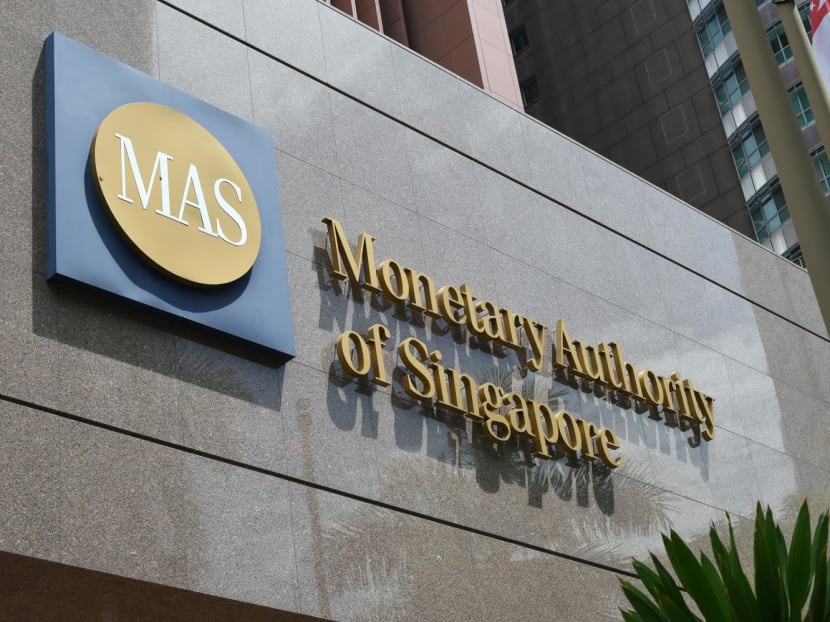Core inflation in Singapore to ease in second half of 2023 and end the year 'significantly lower': MAS
SINGAPORE — Core inflation in Singapore will remain elevated in the next few months, but should progressively ease in the second half of this year, and end the year "significantly lower".

- The Monetary Authority of Singapore released its half-yearly policy statement on April 14
- It said core inflation will stay elevated in the next few months as businesses continue to pass down their accumulated costs to consumers
- However, this is "expected to slow more discernibly" in the second half of 2023
- The authority said it will maintain the prevailing rate of appreciation of the S$NEER policy band
- Advance estimates from the Ministry of Trade and Industry showed that Singapore's economy grew 0.1 per cent year-on-year in the first quarter of 2023
SINGAPORE — Core inflation in Singapore will remain elevated in the next few months, but should progressively ease in the second half of this year, and end the year "significantly lower".
The Monetary Authority of Singapore (MAS) gave this forecast in its half-yearly monetary statement on Friday (April 14).
It added that aside from the easing of core inflation — which excludes accommodation and private transport costs — by the end of the year, imported inflation would also turn "more negative".
Elevated core inflation in the coming months is expected as businesses continue to pass down their accumulated costs to consumers.
But this should slow "more discernibly" in the second half of this year in the midst of falling imported inflation, lower commodity prices and the easing of domestic wage growth, the central bank said.
Advance estimates from the Ministry of Trade and Industry, also released on Friday, showed that Singapore's economy grew 0.1 per cent year-on-year in the first quarter of 2023.
On a year-on-year basis, gross domestic product (GDP) growth came in at 0.1 per cent in the first quarter, which MAS noted was a "sharp step down" from the 2.1 per cent year-on-year growth in the fourth quarter of last year.
It also flagged risks to Singapore's economic growth this year, among them the global electronics industry slump and sluggish growth in the country's major trading partners.
However, the current appreciating path of the Singdollar nominal effective exchange rate (S$NEER) is "sufficiently tight and appropriate for securing medium-term price stability", MAS said.
Therefore, the central bank will maintain the prevailing rate of appreciation of the S$NEER policy band.
This means that there will be no change to its width and the level at which it is centred, and that this policy stance will "continue to reduce imported inflation and help curb domestic cost pressures", MAS added.
The authority manages monetary policy by adjusting exchange rate settings, rather than through interest rates as other central banks do.
By adjusting the slope, mid-point and width of the S$NEER, the Singapore dollar is allowed to rise or fall against and an undisclosed basket of currencies of Singapore's main trading partners.
INFLATION TRENDS
MAS said that core inflation rose to 5.5 per cent year-on-year in the January to February period this year, from 5.1 per cent in the last quarter of 2022.
This was in line with expectations, it added.
The step-up reflected in part the increase in the Goods and Services Tax (GST) rate from January and in tobacco duties from February.
MAS added that services inflation also remained firm amid the ongoing pass-through of elevated business costs.
This was partially offset by lower electricity and gas price inflation following the decline in global oil prices.
The consumer price index, or overall inflation, also edged down to 6.5 per cent year-on-year in the January to February period this year, from 6.6 per cent in 2022’s fourth quarter, as lower private transport inflation offset higher core inflation.
INFLATION OUTLOOK
Barring fresh shocks to global supply, MAS said that Singapore’s imported inflation, which is already negative, should fall further alongside lower commodity prices and the stronger S$NEER.
“Domestic wage growth should also ease as labour demand moderates, especially in sectors more exposed to international trade and finance.”
As for 2023 as a whole, core inflation is expected to average 3.5 to 4.5 per cent.
Overall inflation is forecast to come in higher at 5.5 to 6.5 per cent.
This reflects the tight supply of Certificates of Entitlement and firm accommodation costs, it added.
Excluding the effects of the GST increase, core inflation is projected to average 2.5 to 3.5 per cent, and headline inflation between 4.5 and 5.5 per cent.
Core inflation is projected to reach around 2.5 per cent year-on-year by the end of 2023.
When the impact of the GST increase is excluded, core inflation would be even lower, and closer to the historical average, MAS said.
On MAS's website, the average year-on-year core inflation growth between 2018 and 2022 was 1.5 per cent. From 1990 to 2022, it was 1.7 per cent.
The central bank also said that there are both upside and downside risks to inflation.
"Fresh shocks to global commodity prices could impart additional inflationary pressures," it said.
"However, a sharper-than-expected downturn in the advanced economies could induce a general easing of inflationary pressures."
'DIM' GDP GROWTH PROSPECTS
Singapore's economic slowdown notwithstanding, MAS said that global economic activity was "somewhat more resilient" than expected in the first quarter of 2023.
This reflected the fall in global energy prices, strong consumer demand in the advanced economies, and the lifting of Covid-19 pandemic restrictions in China.
However, it added that the global electronics industry, which has significant production and trade linkages across the region, is in a sharp downturn.
MAS also foresees an intensification of the drag on global investment and manufacturing from tighter financial conditions in the quarters ahead.
The boost to demand in most of the regional economies from their reopening last year will also fade over 2023, it added.
As for China’s rebound, it will largely be consumption-driven and oriented towards domestic services.
"Overall, growth in Singapore’s major trading partners will be slower in 2023, below the pace recorded in the previous two years," MAS said.
Consequently, prospects for Singapore’s GDP growth this year have "therefore dimmed", it added.
The trade-related cluster is expected to contract further, while activity in the modern services sectors remains subdued.
Similarly, the pace of expansion in the domestic-oriented sectors should also moderate as higher consumer prices and interest rates restrain spending.
All in, Singapore’s GDP growth is projected to step down to between 0.5 and 2.5 per cent in 2023, from 3.6 per cent last year, MAS said.
"This below-trend pace of growth will cause the positive output gap at end-2022 to turn slightly negative this year."
As for the global growth outlook, MAS said that it remains uncertain.
This is because the impact of tighter monetary policy in the advanced economies could be amplified by fragilities in the financial system, and it will further restrain credit growth and dampen confidence.
The central bank said that the risks to growth in the global economy and in Singapore are tilted to the downside.








